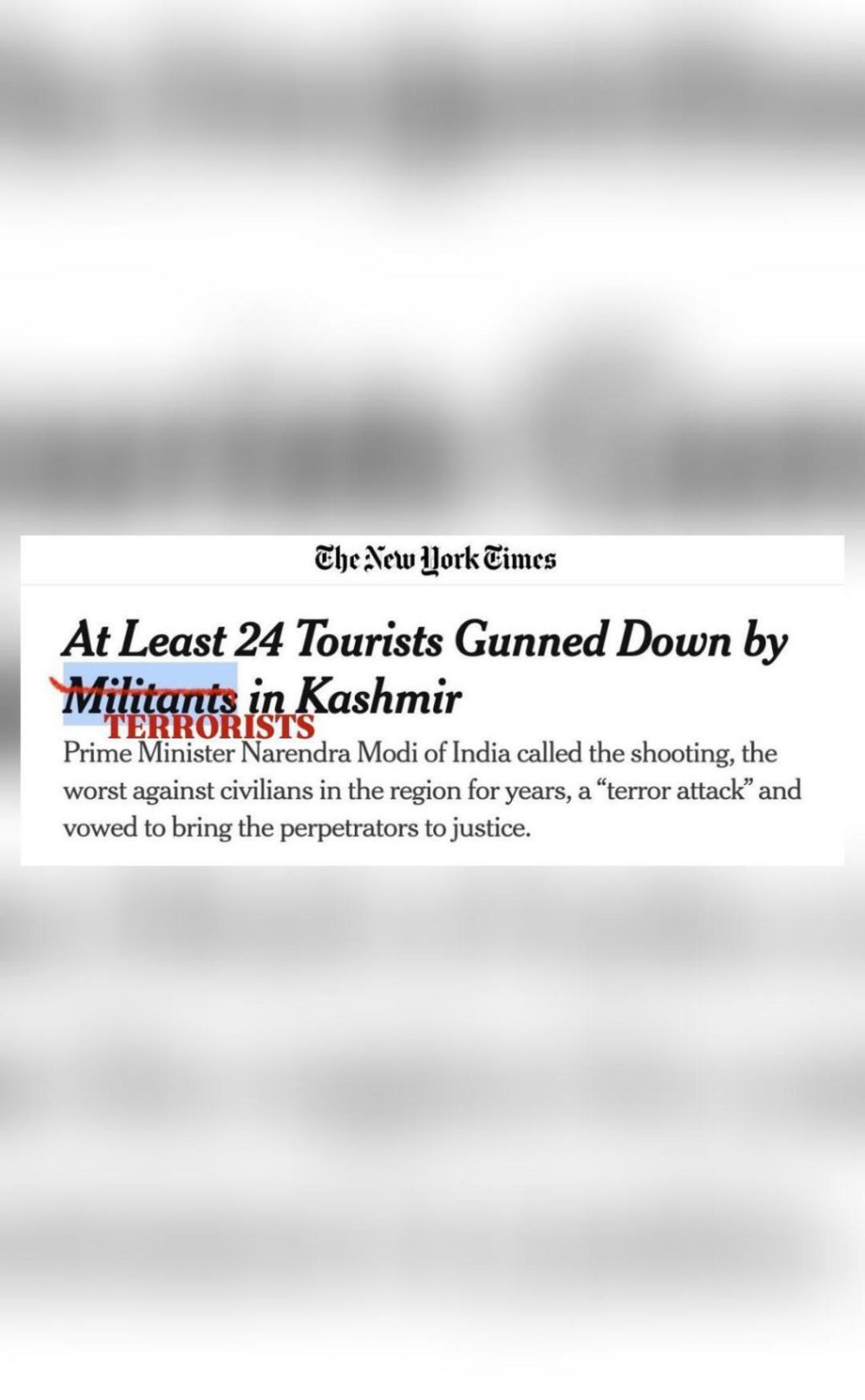
Hey NYT, fixed it for you: US committee after news portal calls J&K terrorists ‘militants’
In the ongoing debate over how to describe terrorist attacks, the US House Committee on Foreign Affairs has recently taken a jab at The New York Times (NYT) for using the term “militants” to describe terrorists behind an attack in Jammu and Kashmir’s (J&K) Pahalgam. The committee shared a screenshot of the NYT article on its Twitter handle, accompanied by a sarcastic comment, which has sparked a heated discussion on social media.
The tweet, which has gone viral, reads: “Hey NYT, we fixed it for you…This was a TERRORIST ATTACK plain and simple…Whether it’s India or Israel, when it comes to TERRORISM, NYT is removed from reality.” The screenshot shows the NYT article with the headline “Dozens Killed in Attack in Kashmir” and the text describing the attack as carried out by “militants”.
The US House Committee on Foreign Affairs is a bipartisan committee responsible for considering foreign policy and national security issues. The committee’s tweet was met with a mixed response, with some users agreeing with their stance, while others defended the NYT’s use of the term “militants”.
The issue of how to describe terrorist attacks is a complex one, with different countries and organizations having their own definitions and terminology. The term “militant” is often used to describe individuals or groups that engage in armed struggle against a government or other authority, while “terrorist” is often used to describe those who use violence or intimidation to achieve political or ideological goals.
However, in the context of the attack in Pahalgam, which resulted in the deaths of dozens of people, it is clear that the perpetrators were responsible for a terrorist attack. The use of the term “militants” to describe them downplays the severity of the attack and implies that they were engaged in a legitimate armed struggle, rather than a terrorist attack.
The US House Committee on Foreign Affairs’ tweet is not the first time that The New York Times has been criticized for its use of language in describing terrorist attacks. In the past, the newspaper has been accused of using euphemisms to describe terrorist attacks, which can be seen as minimizing the severity of the attacks and the harm caused to innocent civilians.
In this case, the committee’s tweet is not just a criticism of the NYT’s language, but also a defense of India and Israel, which are often the subject of criticism from the newspaper for their handling of terrorism and human rights issues. The tweet implies that the NYT is biased against these countries and that its language is influenced by this bias.
The debate over how to describe terrorist attacks is not just a matter of semantics, but also has significant implications for how we understand and respond to terrorism. The use of the term “militant” to describe terrorists can be seen as trivializing the severity of the attack and minimizing the harm caused to innocent civilians. On the other hand, the use of the term “terrorist” can be seen as stigmatizing and demonizing the perpetrators, which can make it more difficult to address the root causes of terrorism and find a peaceful solution.
In conclusion, the US House Committee on Foreign Affairs’ tweet is a reminder that language matters, and that the way we describe terrorist attacks can have significant implications for how we understand and respond to them. While the committee’s criticism of the NYT’s use of the term “militants” is valid, it is also important to recognize that the debate over how to describe terrorist attacks is complex and multifaceted. Ultimately, the goal should be to find a language that accurately reflects the severity of the attack and the harm caused to innocent civilians, while also avoiding language that trivializes or stigmatizes the perpetrators.
Source: https://x.com/HouseForeignGOP/status/1914843415793095043



